Rate this article :
This article was useful to you ?
Yes
No
Vous avez noté 0 étoile(s)
Sommaire
Procédure
WHMCS is a turnkey solution for customer relationship management, billing and support. It is a pioneering software package that allows you to easily manage your domain name buying and selling business. To make your job even easier, LWS has developed a free module for WHMCS to integrate our Client API so that you can manage your services and those of your customers calmly and efficiently.
With this module, you can resell LWS domains directly to your customers, without going through our interface: purchase, transfer, renewal, management... it's all there!
To take advantage of it, you need to install WHMCS on your hosting and have an active licence in order to use the product.
WHMCS is a complete and powerful software package, but it can be intimidating for beginners. Detailed documentation is available free of charge on the WHMCS website to help you get started. And if you don't yet have hosting or would like to switch to a cPanel package to make things easier for you, LWS offerscPanel hosting packagesfrom €2.99/month.
The rest of this article assumes that you have hosting with WHMCS installed, configured and running.
To download the LWS module, go to the WHMCS marketplace, which you can access via this link or from your WHMCS, in the Additional Modules menu and Vist WHMCS Marketplace. Here, in the search bar, enter "LWS" and select the "LWS - Ligne Web Services" module then, on the module page, click on the green "Get it Now" button to start the download and receive the apilwsnet.zip ZIP file.
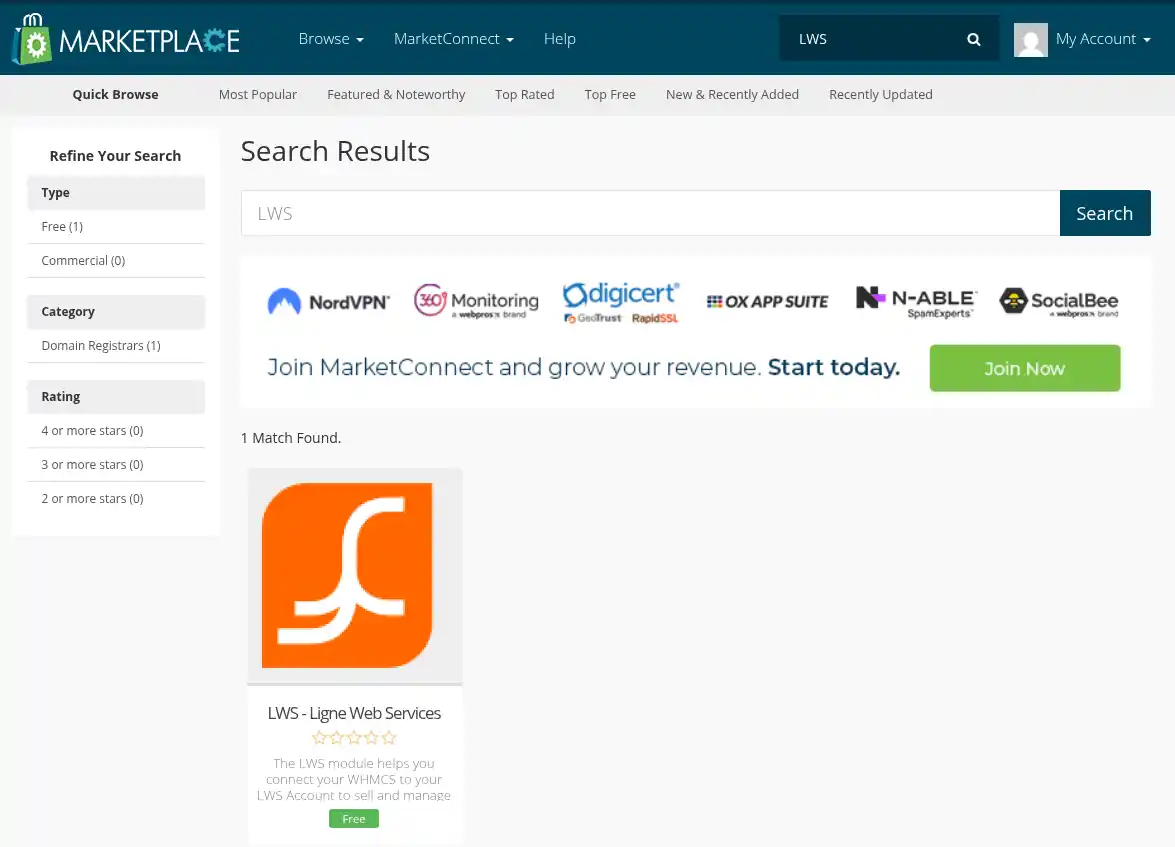
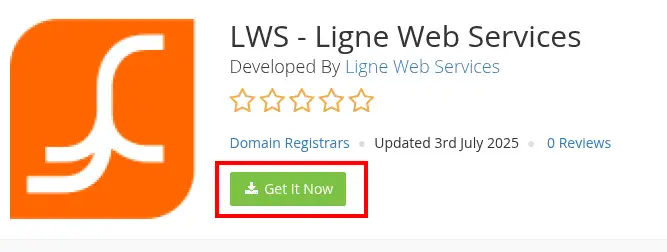
Unlike other software such as WordPress or Prestashop, once a module has been downloaded, it is not directly installed on your site. To install it on your WHMCS, you will need to go to your site files and upload the module directly to your site. There are several ways of accessing your site files:
Whichever method you use, navigate to the modules folder and then registrars. From here, upload the ZIP file you downloaded earlier and then extract it; you should now see a folder called apilwsnet in modules/registrars, thus completing the installation of the module.
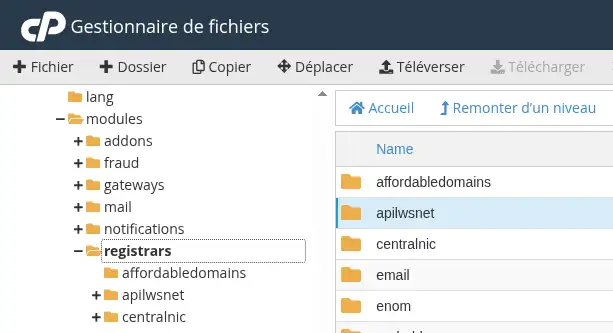
The module is now installed on your WHMCS installation, but before you can take advantage of its features, you will need to activate and configure it. To do this, return to your site and go to the options menu then Configure to display the WHMCS configuration page; from here, click on Applications and integrations in the left-hand menu if you are not already there, then on the Registrar card.

If everything went well when you installed the plugin, you should see a Line Web Services (LWS) module in the list of modules. If this is not the case, make sure you have extracted the ZIP folder and that it is in modules/registrars. Click on the Activate button to activate the module, which will reload the page and open the module configuration menu.

Enter the LWS ID of your LWS account in the X-Auth-Login field, your API key in the X-Auth-Pass field and tick, or not, the Test Mode box depending on whether you want to try out the module or not: Test Mode allows you to use all the actions of the module in a separate environment where any purchases and modifications will not actually be reflected on your account. If you activate Test mode, enter your Test API key, otherwise enter your Production API key.

If you do not have an LWS account, you will need to place an order on lws.fr to obtain one. Also, if you don't have an API key yet, you can follow this step-by-step documentation explaining how to generate an API key and the basics of using the API.
Once you have filled in the fields, validate the changes to make the module operational.
As with all WHMCS registrar modules, when you view or modify a domain, you have the option of choosing a registrar from among those installed on your site. By choosing LWS, calls to the LWS API will be made to retrieve the DNS, DNS zone, expiry date, domain status, etc. and any changes to the domain (such as its DNS zone or DNS) will be passed on to the registrar.
For a domain to be manageable by a registrar, it must be registered with the registrar. In the settings for a domain, you have the option of registering or transferring a domain with LWS at the click of a button, which, if the registration is successful, will add the domain to the LWS account linked to the e-mail address on the contact form. If no account exists, one will be created. The purchase will be made using the prepaid balance of the LWS account linked to the API key.
You also have the possibility to add on WHMCS the list of all TLDs (.fr, .com, ...) supported by LWS and their prices as well as define LWS as an automatic registrar, so that any domain purchased on WHMCS will be added and managed by LWS, provided that LWS manages this extension. To do this, return to your site and go to the options menu then Configure to display the WHMCS configuration page; from here, click on Products and Services in the left-hand menu and then on the Domain prices box.
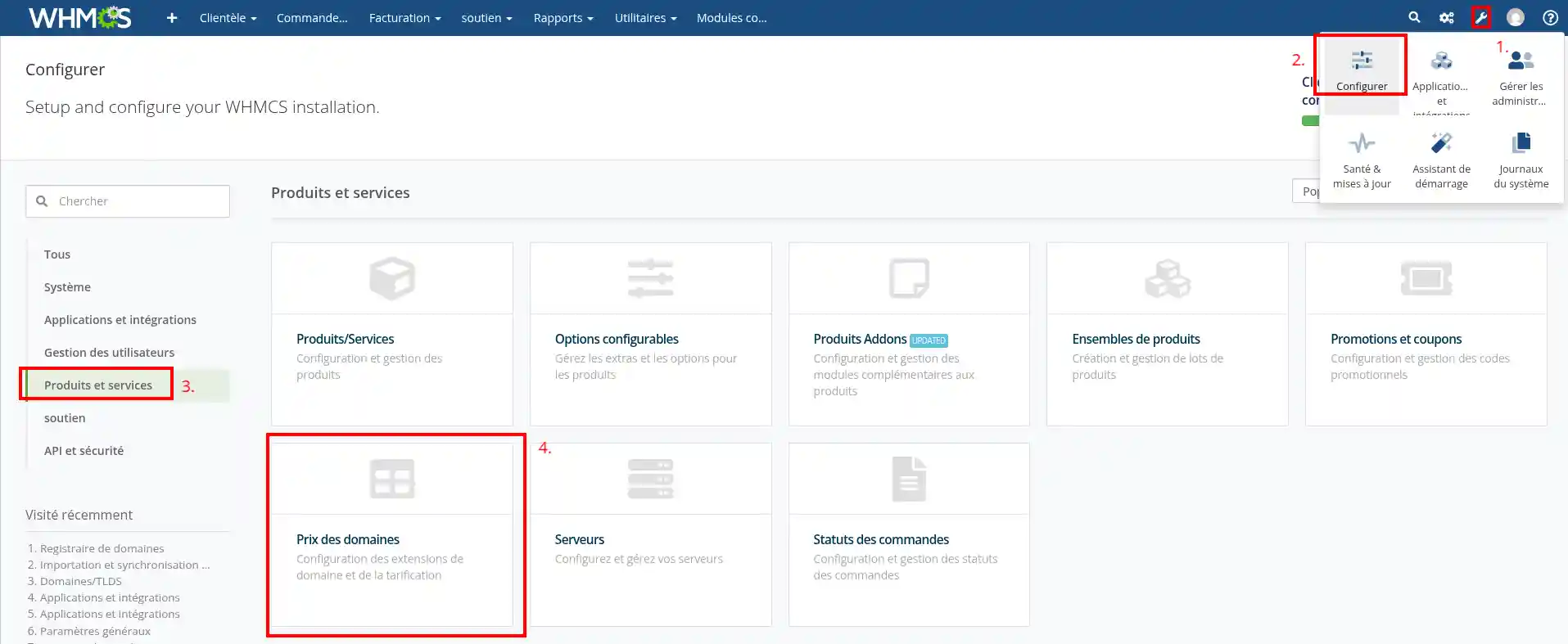
If you have already used this option in the past, click on the link in the blue box at the top of the page to display the list of registrars and then click on the LWS box.
 Alternatively, click directly on the LWS box.
Alternatively, click directly on the LWS box.
![]()
Once it has loaded, you will see a list of the extensions, arranged by category, that LWS offers. You can choose which extensions to add, adjust their prices, margins, etc. and activate automatic registration. Make your choices and then click on the Import TLDs button to confirm.
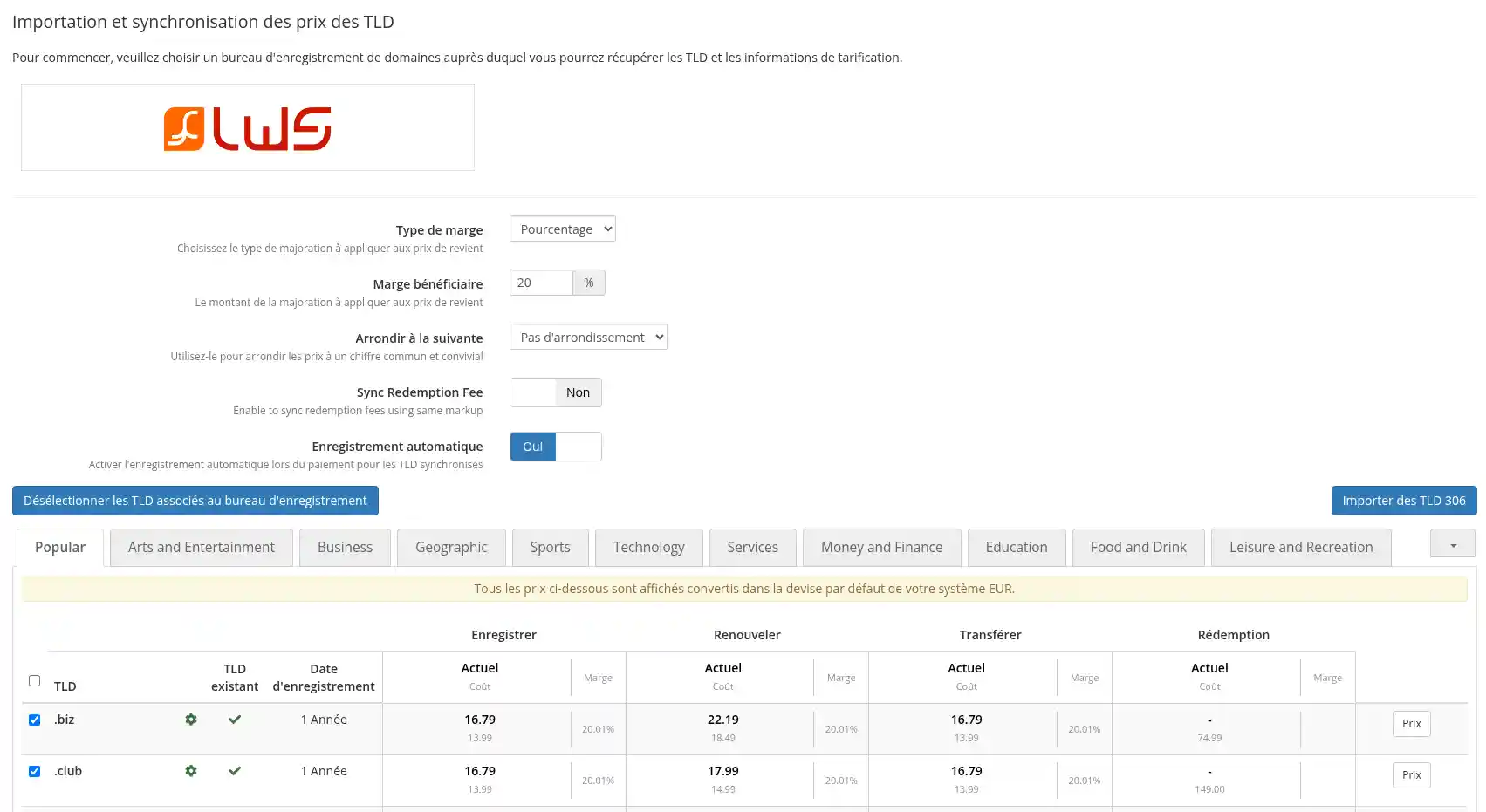
Your module is now configured and operational. You can use WHMCS as normal, and take advantage of the LWS API to buy and manage your LWS domains.
You now know how to :
Thanks to this article, you are now able to take full advantage of WHMCS features and the LWS module to optimize your domain name buying and reselling business. 🚀🔧
We hope you find this information useful and that it will help you develop your online business efficiently and with peace of mind. 💼💡
Thank you for reading! If you have any questions or feedback to share, don't hesitate to leave a comment below. Your opinion matters to us! 💬👍
Rate this article :
This article was useful to you ?
Yes
No
3mn reading
How do I create a Spip website?
2mn reading
How do I create a Drupal website?
1mn reading
2mn reading